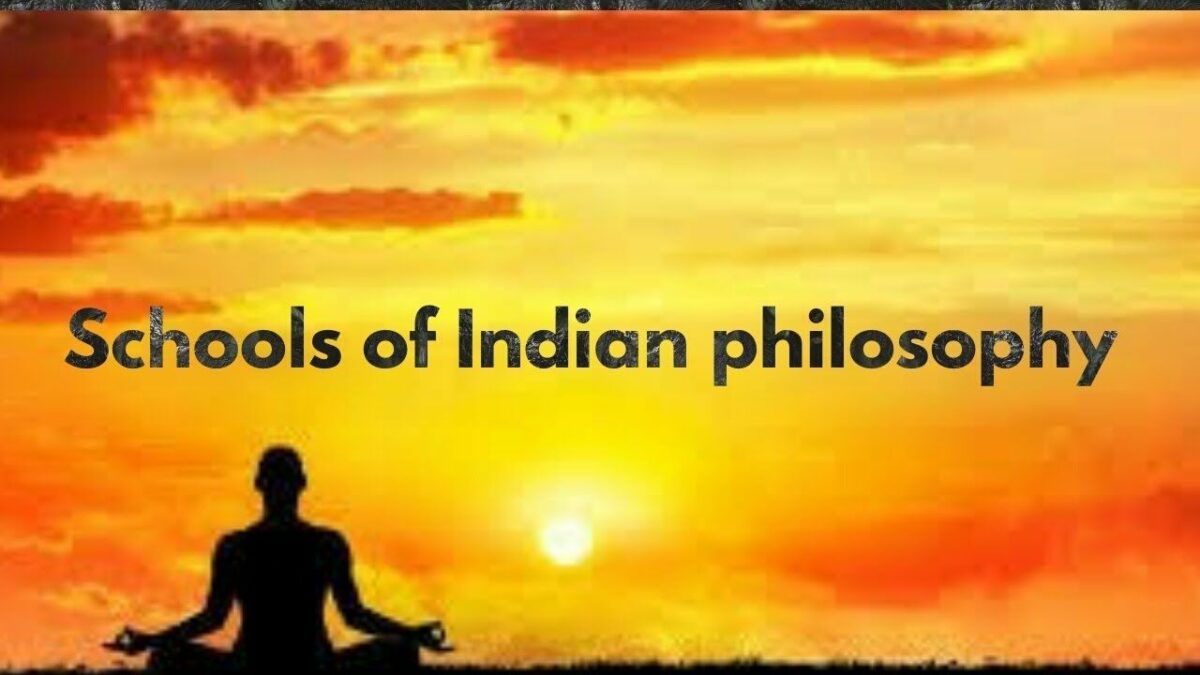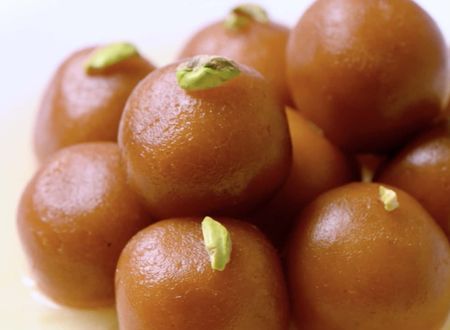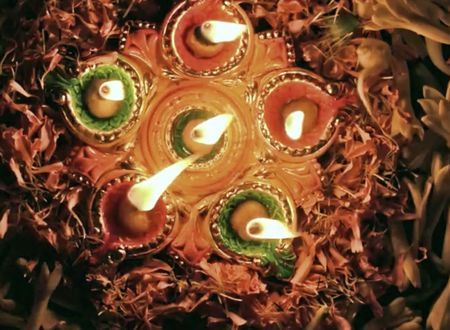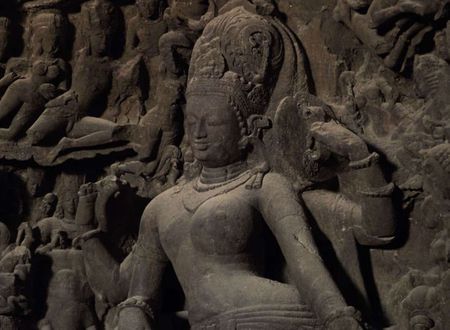Shad-Darshana: Understanding Hindu school of Thoughts ( Part Four) :
The Vaisesika philosophy derives its name from visesa meaning ‘particularity.’ The Vaisheshika school of Indian philosophy bases itself on Vaisheshika Sutra by the sage Kanada, and commented on in the 5th century CE by Prashastapada. This is considered one of the oldest systems and is said to be contemporary to the Sankhya system. They are called visesa as they believe that there are various objects in the world and each object has a particular (visesa) atomic structure.
Sage Kanaada, the founder of Vaisheshika was the first one to propose the theory of atomic structure. He postulated that all objects in the physical universe are reducible to paramāṇu (atoms), and one’s experiences are derived from the interplay of seven padarthas namely, dravya (a function of atoms, their number, and their spatial arrangements), Guna (quality), Karma (activity), samanya(universality), visesa (particularity), samvaya (inherence) and abhava(non-existence).
Later Vaisheshika doctrines by Prashastapada and others proposed the atomic theory of creation in terms of creation and dissolution and God as the remote cause of everything: it is God who orchestrates the dynamic interrelations between the innumerable atoms. Everything was composed of atoms, qualities emerged from aggregates of atoms, but the aggregation and nature of these atoms were predetermined by cosmic forces. Creation in their view was an arrangement of atoms in a particular way and destruction was a dissolution of this geometrical arrangement of atoms. The atoms remain in a passive inactive form even after the dissolution.
The word ‘padarthas’ for Vaisheshika means an object which possesses uniqueness or has a distinct individuality known as ‘astitva’ and can be thought of ( jnanetvya) and can be given a unique name( abhideyatva). Astitva is the bedrock of Vaisheshika philosophy. Here lies the secret of Divine names invoked in Sanatana Dharma. Many times, people say why we have so many names for Divine and why we can not just call him by one name. Each name of Divine holds a unique astitva or individuality and to distinguish that uniqueness, the divine is invoked by a different name. This is the reason it is always said that name and individuality are not considered separate in Sanatana Dharma. Each name has a unique individuality.
Dravya :
Dravya is the repository of guna( qualities) and karma (action). According to Vaisheshika’s philosophy, guna and karma can’t exist independently. They need dravya to subsist in. Hence, Dravya is the ashraya ( locus) for guna and karma . Dravya is also considered the material cause of the universe. They say that dravya exists independently in the first stage of creation, in the next stage, they inherit guns and karma. Dravya can not be recognized, however, without guna and karma.
The nine Dravyas are Prithvi ( earth element), apas( water element), Vayu ( air element), Tejas ( fire element), Akash ( ether element), kaala ( time), dik( location), atmaa( soul), manas( mind). Four Dravyas namely kaala ( time), manas( mind), dik ( location), and Atma ( soul) are eternal Dravyas while the Pancha-bhutas are non-eternal Dravyas are per this school of thought.
Prithvi dravya is the substratum for smell, apas for taste, Vayu for touch, Tejas for color, and ether for sound. Kaala is the substratum for the cognition for past, present, future, etc. Dik is the substratum for our cognition like here, there, near, far, etc. Atma is all-pervading and is the substratum for consciousness. Paramatma is a special kind of aatma and has perfect knowledge. Manas is an internal sense organ and is the substratum for experiences like pain, pleasure, etc.
Guna :
Every guna tries to express a particular existence. There are 24 types of guna namely, Rupa ( colour/form), rasa( taste), Gandha ( smell), sparsha ( touch), Shabda ( sound), Sankhyaa ( number), parimaana ( measurements), prutaktva ( distinguishing factor), samyoga( combinations), vibhaaga ( division), paratvam ( nearness), apartvam ( farness), guru ( heaviness), Drava ( liquidity), Sneha ( viscosity), buddhi( cognition), sukha ( pleasure), dukkah ( suffering), iccha ( desire), dvesha ( hatred), prayatna (effort), dharma ( righteous actions as prescribed in Vedas), dharma ( non- righteous action), samsara ( latent tendencies).
Karma :
Karma is an action or movement. It always results in some merit or demerit. As we sow, so shall we reap is a metaphysical perspective for the theory of karma. However, they believe that karma resides in dravya. Karma resides only in non-eternal dravyas( Pancha-bhutas). They can not subside in kaala, manas, dik, and aatma. They can not exist independently.
Vaisheshika attempts to describe what exists by giving a six-fold view of the world and classifying the world into six categories.
The Vaisheshika chooses to see the world in a unique way and describe the structure of the world only in terms of dharma – dharmin. The dharma here meant the intrinsic nature or property of anything. Dharmin is the one who possesses the dharma(property). Unless we understand the meaning of dharma and dharmin and their interrelation, it is difficult to understand the Vaisheshika school of thought.
Major Contribution of Vaisheshika School of thought:
The atomic theory of creation:
At the beginning of new creation, the atoms are first set into motion by the will of Isvara. This results in the combining of two atoms to create a new product known as dvyanuka. (dyad). Thereafter, three dvyanukas( dyads) are combined to form a (tryanuka) triad. This is the smallest visible form of matter. Subsequently, four triads join to form a tetrad ( caturnuka), and the creation of gross bodies takes place in geometric progression. Ever wondered Why Lord Vishnu in Indian mythology is shown with four arms. Now, you know the answer.
Propagation of Sound:
Vaisheshika also proposed that the propagation of sound happens in the form of waves. They said that the first sound of the wave is produced by external energy. However, before getting destroyed it gives rise to another sound, this following sound is produced by the propagation of the previous energy and so on. The previous sound before getting destroyed creates a new sound until it reaches the ear. It is so amazing that this model of sound is quite similar to the recent understanding of sound. They arrived at these concepts by closely observing the padarthas and contemplating on the padarthas.
Vaisheshika also provides us with an extensive measurement of Kala( time) and dik( direction).
Features of Vaisheshika school of thought:
- Ignorance is the root cause of the suffering of the soul.
- Ignorance can be removed by knowing the true dharma( property) of various objects in the world. Knowing the dharma of something will tell us why we hanker for a particular object. It will tell us the dharma of which Padartha has bound us and we will attempt to liberate us from that dharma.
- Vaisheshika considers only 2 pramanas, unlike Nyayikas who considers four pramanas( means of valid knowledge).
- The Vaisesika School believes Vedas as a word of Ishvara.
- It also believes in the principle law of karma.
- A soul is separate from the Ishvara and will remain eternally separated.
- A soul can desire and will and undergoes pain/pleasure.
- Ishvara is the supreme soul, perfect, omniscient, omnipresent, and eternal.
- Consciousness is not the inherent quality of Jiva.
- Liberation as per the Vaisheshika School of thought is freedom from pain and pleasure. There is no concept of eternal ananda.
- The way to attain the right means of knowledge is through contemplation of the objects for a prolonged period of time. When you contemplate on an object for a long time, its true nature comes forth, and that dissolute the bond between the object and the subject(soul).
The merger of Nyaya- Vaisheshika :
Nyaya and Vaisheshika are later considered as a pair in Indian Philosophy, much like Sankhya-Yoga. Here Vaisheshika has the practical approach whereas Nyaya has the theoretical approach.
Although Nyaya and Vaisheshika initially developed independently. However, in recent times after a period of independence, the Vaisheshika school fused entirely with the Nyaya school, a process that was completed in the 11th century. Thereafter the combined school was referred to as Nyaya-Vaisheshika. Nyaya and Vaisheshika’s school of thought are very similar and they both attempt to validate the existence of Supreme by understanding the manifested world. Both the system believes that time, space, atoms, and atman are eternal. Nyaya focuses more on logic and reasoning while Vaisheshika focuses more on metaphysics and naturalism. The other major difference is Vaisheshika believes in perception and inference as the two reliable means to knowledge, while Nyaya followers believe in four sources of knowledge: perception, inference, verbal testimony, and comparison.
In conclusion, the Vaisesika system indicates the beginnings of a scientific method both in investigating the external world and the internal world of the mind. In later systems, this attitude is expanded and amplified.









Comments & Discussion
7 COMMENTS
Please login to read members' comments and participate in the discussion.